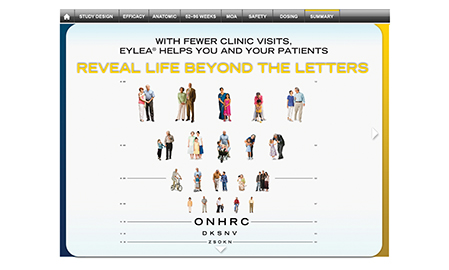H4B Catapult president Jeff Hoffman would like to correct what he sees as a mischaracterization of his firm. “We are not a digital agency,” he says. “For some reason, we keep showing up as the digital agency in New Jersey for Havas. That’s not us. Don’t call us ‘digital.’”
Hoffman doesn’t sound this request with anger or exasperation in his voice. Rather, he wants to correct the perception as a practical matter. In 2014, after all, there’s no benefit in being seen as a company that’s first and foremost digital. “Pure-play digital shops aren’t going to be around much longer. Having those skills is more or less assumed at this point,” Hoffman says.
Catapult still handles digital work with aplomb, as witnessed by a client roster with many prestige brands—but the company is just as committed to its other specialties, from managed markets to medical education to consumer. Catapult also delivered on one of last year’s promises, making inroads into oncology. It added work from Novartis, expanded its GlaxoSmithKline and Sanofi portfolios and, with sibling firm H4B Chelsea, deepened its relationship with Genzyme.
While headcount remains about the same at 150, Catapult bulked up its executive hierarchy with two key hires: chief creative officer Gerry McLaughlin and executive vice president and director of client services Joe Caminiti. “Gerry has a different way of looking at creative. His work is both simple and iconic,” Hoffman says. “Joe is a real asset because he’s got 30 years of experience on the client side [much of it at Wyeth]. Before we go to pitches, he can sit down with our teams and say, ‘This is what the client is thinking, this is what they need to hear from you, here’s what they’ll negotiate and here’s what they won’t.’”
So Hoffman is thrilled by the agency’s evolution during the last 12 months and expects its roll to continue, to the tune of “at least” high single-digit growth in 2014. That said, he’s the rare agency prexy who not only seems comfortable with continuous change, but actually embraces it. “I’m a guy who likes to jump out of airplanes at 30,000 feet and watch the ground come up at me, and think of a plan in between,” he quips.
To that end, Catapult has been experimenting with tactics that, while somewhat unusual, feel both smart and forward-thinking. The agency has brought along patients to a pitch for a cancer drug and Skype’d them in from afar during other meetings with would-be clients. “They’re usually like, ‘That’s really different.’ It’s basically live market research at the pitch,” Hoffman says. And to better fill out project teams with the best and most appropriate talent from the Havas Health network, Catapult has created KIN (Kinetic Ideation Network), a controlled crowdsourcing tool.
The desire to innovate and evolve doesn’t stop there. Hoffman hopes to further bolster Catapult’s presence in several therapeutic categories, including oncology, rare diseases (“with these specialty brands, there’s just no faking it”) and personalized medicine (“the human genome area is fascinating…. Two years from now, you’re going to have your whole gene sequence on your iPhone”). Some of the change might result in a heap of new business cards, Hoffman adds. “I’d love to go to a management structure where titles don’t matter. I’m not ready to commit to it yet, but we’re investigating.”
From the July 01, 2014 Issue of MM+M - Medical Marketing and Media








